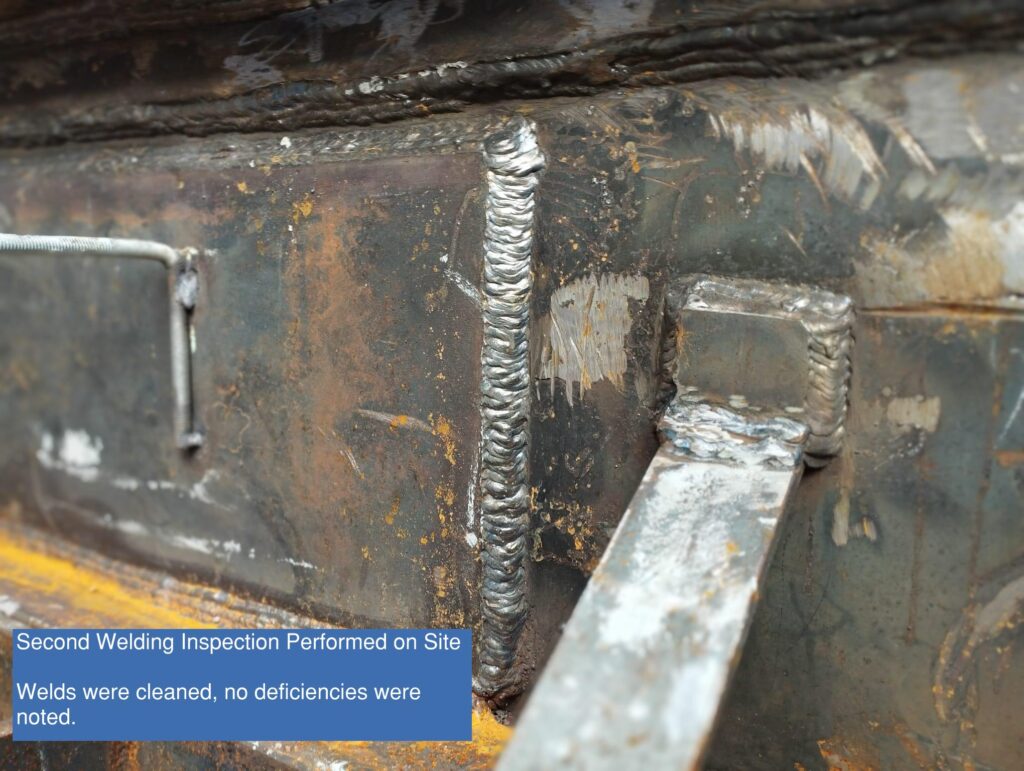Recognizing the Process of Welding Inspection Racine for Ideal Results
Recognizing the Process of Welding Inspection Racine for Ideal Results
Blog Article
Ingenious Techniques to Fillet Weld Evaluation and Testing: Enhancing Weld Quality and Conformity Standards
In the realm of welding, the top quality and stability of fillet welds play a crucial duty in making certain the structural soundness and integrity of different commercial elements. With the constant drive for boosted efficiency and conformity with strict criteria, the expedition of ingenious approaches to fillet weld examination and testing has actually ended up being important.
Advanced Non-Destructive Screening Techniques
Making use of cutting edge modern technologies, advanced non-destructive screening techniques play a crucial function in ensuring the stability and top quality of fillet welds. These techniques, such as phased selection ultrasonic testing (PAUT) and magnetic bit screening (MPT), offer thorough insights right into the weld's internal framework without causing any kind of damage to the product. PAUT, for instance, uses multiple ultrasonic aspects to inspect the weld from numerous angles, offering a comprehensive visualization of prospective defects like absence of fusion or splits.
By utilizing these sophisticated non-destructive screening methods, weld examiners can precisely examine the high quality of fillet welds, making sure compliance with industry criteria and guidelines. The capacity to identify imperfections early on not only enhances weld quality yet likewise avoids costly rework or failings in structural integrity, highlighting the relevance of these ingenious screening techniques in welding assessments.
Robotics and Automation in Evaluation
The integration of robotics and automation has actually transformed the inspection procedure for fillet welds, improving efficiency and precision in quality analysis. Robotics provide precise control and repeatability in checking welds, guaranteeing consistent and trusted outcomes. Automated systems can be programmed to adhere to particular examination courses, ensuring detailed insurance coverage of welds and decreasing the threat of human error.
Robotic examination systems geared up with innovative sensors can spot and gauge weld functions with high precision, giving in-depth data for analysis. These systems can recognize defects such as fractures, lack of fusion, and porosity, making it possible for timely corrective activities to be taken. Additionally, robotics and automation permit real-time data collection and evaluation, offering prompt feedback to operators and promoting fast decision-making procedures.
In addition, the use of robotics and automation in fillet weld assessment boosts general performance by lowering inspection times and enhancing assessment throughput. By simplifying the inspection process, makers can make certain weld quality and compliance criteria are fulfilled successfully, ultimately resulting in set you back financial savings and improved item quality.
Utilizing Artificial Intelligence for Evaluation
Man-made intelligence plays a pivotal duty in improving the effectiveness and precision of evaluation in fillet weld assessment processes. AI formulas can swiftly refine huge amounts of information from weld examinations, finding flaws or disparities that might be testing to determine with the naked eye - Welding Inspection Racine.
Moreover, AI systems can pick up from past inspection information, continuously improving their ability to recognize prospective defects and inconsistencies in fillet welds. This adaptive learning ability boosts the overall quality assurance process, decreasing the possibility of human error and making certain that welds satisfy the called for standards. By incorporating man-made knowledge right into fillet weld evaluation, markets can attain higher degrees of effectiveness, uniformity, and compliance in their evaluation practices.
Portable Devices for On-Site Examination
 Enhancing field inspection effectiveness, the fostering of portable devices reinvents on-site evaluation processes for fillet welds. These tools use versatility and comfort, permitting examiners to conduct thorough exams in numerous locations, consisting of difficult or remote environments. Portable devices such as ultrasonic screening gadgets, magnetic bit examination tools, and digital radiography systems provide real-time information and high-resolution imaging capacities, enabling fast decision-making and immediate responses on weld quality.
Enhancing field inspection effectiveness, the fostering of portable devices reinvents on-site evaluation processes for fillet welds. These tools use versatility and comfort, permitting examiners to conduct thorough exams in numerous locations, consisting of difficult or remote environments. Portable devices such as ultrasonic screening gadgets, magnetic bit examination tools, and digital radiography systems provide real-time information and high-resolution imaging capacities, enabling fast decision-making and immediate responses on weld quality.One considerable benefit of mobile tools is their capacity to simplify assessment treatments, decreasing downtime and improving overall productivity. Assessors can easily deliver these devices to different work sites, removing the need for moving hefty equipment or components to off-site facilities. In addition, the portability of these devices advertises cost-effectiveness by lessening transport expenses and increasing assessment timelines.
Additionally, using portable tools for on-site evaluation promotes aggressive quality control actions, as examiners can without delay determine and address any prospective welding flaws or disparities. By incorporating these cutting-edge innovations right into on-site assessment methods, welding specialists can guarantee conformity with market standards and enhance weld high quality, ultimately causing improved architectural stability and safety and security in different welding applications.
Combination of Data Monitoring Solution
Having enhanced on-site inspection processes through the use of mobile devices, the next phase involves the seamless integration of information management systems to better boost efficiency and information analysis abilities in fillet weld examination and testing. Welding Inspection Racine. By integrating data monitoring systems right into the evaluation process, companies can streamline data collection, storage, and analysis. This integration permits real-time surveillance of weld top quality, immediate recognition of issues, and timely decision-making to correct any issues that may occur throughout the evaluation process
The combination of information administration systems makes it possible for seamless interaction between various stakeholders involved in the assessment process, promoting collaboration and improving total high quality control other actions. Eventually, the assimilation of data administration systems offers to raise the criteria of fillet weld evaluation and screening, ensuring compliance with market regulations and improving weld top quality.
Conclusion
Finally, cutting-edge methods to fillet weld assessment and screening have substantially enhanced weld quality and conformity criteria. Advanced non-destructive testing methods, robotics, automation, expert system, portable tools, and data monitoring systems have transformed the click for more method weld examinations are conducted. By utilizing these innovations, sectors can ensure that welds meet the needed high quality criteria and laws, ultimately improving overall effectiveness and security in welding processes.

By utilizing these sophisticated non-destructive screening methods, weld examiners can precisely examine the high quality of fillet welds, making sure conformity with market standards and regulations. Portable devices such as ultrasonic screening gadgets, magnetic bit evaluation equipment, and digital radiography systems provide real-time information official site and high-resolution imaging capacities, allowing fast decision-making and instant comments on weld quality.
Having maximized on-site inspection processes via the use of portable tools, the next stage includes the seamless assimilation of information administration systems to even more boost performance and data evaluation capacities in fillet weld assessment and testing (Welding Inspection Racine). Ultimately, the assimilation of information administration systems serves to elevate the criteria of fillet weld assessment and testing, ensuring conformity with industry laws and boosting weld quality
 In final thought, innovative approaches to fillet weld examination and screening have dramatically improved weld quality and conformity standards.
In final thought, innovative approaches to fillet weld examination and screening have dramatically improved weld quality and conformity standards.Report this page